Somewhere, right now, someone is bemoaning the decline of writing. Grammar scolds lay down the law on the “proper” ways to speak and write. Business executives complain about the poor quality of emails. Government bureaucrats wade through piles of regulatory documents. And teachers grouse that texting and social media make their jobs impossible.
Statistics support the complaints. By one account, American businesses suffer $204 billion in lost productivity every year because of poor writing. Businesses and colleges must run remedial courses on writing. But writing programs—in schools and companies—usually make little difference. Less than half of the 2,300 students tracked in a four-year study said their writing had improved in college.
To the rescue comes Steven Pinker, the rock-star language maven from Harvard. Pinker is celebrated for his friendly and lucid style. The subtext of his writing might be: Here, let me translate what those eggheads are saying—and how you should think about these academic debates.
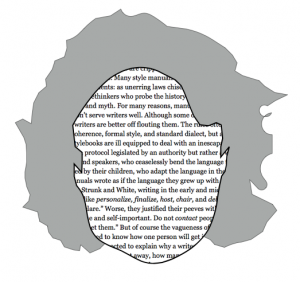 Pinker seems the perfect candidate to write a definitive writing guide. After writing two scholarly tomes early in his career, he has become a popularizer of intellectual ideas. In The Language Instinct, The Blank Slate, and How the Mind Works, Pinker offers erudite tours of the mysteries of thinking and acting. In The Better Angels of Our Nature, he shows that the world is becoming a safer, less violent place.
Pinker seems the perfect candidate to write a definitive writing guide. After writing two scholarly tomes early in his career, he has become a popularizer of intellectual ideas. In The Language Instinct, The Blank Slate, and How the Mind Works, Pinker offers erudite tours of the mysteries of thinking and acting. In The Better Angels of Our Nature, he shows that the world is becoming a safer, less violent place.
Alas, Pinker fails. His guide The Sense of Style is a mess. He does a decent job explaining “classic style,” in which the writer “orients the reader’s gaze,” pointing out interesting or important things in a conversational style. But he gets lost in a maze of academic exercises and random prescriptions. For 62 pages Pinker expounds on abstract models for analyzing writing. For 117 pages, he renders judgment on a random assortment of quarrels on word usage. Very seldom does Pinker actually explain how to write well, sentence by sentence and paragraph by paragraph.
The manual we need
A good writing manual would begin with the two essential elements of writing: the sentence and the paragraph. Hemingway once noted that “one true sentence” was the foundation of all good writing. The good news is that anyone, with the right basic skills, can write that one true sentence—and then a second, a third, and so on.
So where is Pinker’s advice on composing a sentence? Nowhere and everywhere. Pinker jumps from topic to topic—from the minutiae of grammar to disagreements over word meanings—but he never shows how to craft good sentences for all occasions. When he explores the way sentences get tangled, the dazzled/befuddled reader has no real foundation for the discussion. It’s as if someone described the infield fly rule in baseball without first explaining that pitchers throw, hitters swing, and fielders catch.
Maybe Pinker finds the basics too, well, basic. Maybe he doesn’t want to dwell on the simple subject-predicate structure because, well, it’s just so obvious. But until we master these basics, we can’t understand more complicated structures—how to build complex and complicated sentences, how modifiers work, how to identify subjects, how to connect ideas, and when to break rules. Since we lack that basic point of reference, Pinker’s more esoteric explorations often get lost in the shuffle.
What about paragraphs? Forget it. “Many writing guides provide detailed instructions on how to build a paragraph,” Pinker says. “But the instructions are misguided, because there is no such thing as a paragraph.” It’s true that the paragraph offers “a visual bookmark that allows the reader to pause.” It’s also true, if you want to understand writing with Pinker’s tree analogy, that paragraph breaks “generally coincide with the divisions between branches in the discourse tree.” But that’s a copout. We can do better. Try this working definition: A paragraph is a statement and development of a single idea.
All too often, when we first begin writing a passage, as Pinker notes, our thoughts spill out, one after another. We begin with one thought and then, without developing it, jump to another thought. And so paragraphs become jumbles of thoughts, some developed and some not. After a while, we hit the return key. We think we have written a paragraph just because we have created, as Pinker says, a brief pause.
To avoid catch-all paragraphs, consider the concept of the “idea bucket.” Every paragraph is a bucket; every bucket contains just one idea, along with whatever support is needed to develop that idea. Each paragraph should be able to stand alone. To make sure you express and develop just one idea in each paragraph, label each idea. If a paragraph contains two ideas, break it up in to two paragraphs—or get rid of the extra idea if it’s not germane to the piece.
Most strong writers over the past century—Ernest Hemingway, Scott Fitzgerald, Eudora Welty, Gay Talese, Elizabeth Gilbert, Laura Hillenbrand—follow the one-idea rule. Each paragraph is a mini-essay, a complete expression of an idea, which follows the previous idea and sets up the next.
Complicating matters
How does Pinker fail so badly? Quite simply, he falls victim to the “curse of knowledge,” which he describes in the book’s second chapter. Immersed for decades in academic writings on neurology, evolution, and linguistics, Pinker takes simple questions and turns them into complex academic discourses. Few if any writers—students, business people, journalists, or even academics—will get clear direction from Pinker about turning their muddy writing into clear, vivid prose.
He’s not the kind of guy who rolls up his sleeve and says, “Here, lemme see whatcha got. How can we get this right?”
Thinking about structure
Let’s zoom in on Pinker’s fatal mistake. It’s useful to begin, Pinker says, by examining the hidden structure of writing. He uses three models.
- The web: a collection of ideas, some related and some not, arranged along nodes.
- The tree: ideas arranged in hierarchies, where big limbs hold smaller limbs in support of a single trunk of an idea.
- The string: ideas that move in a clear sequence, one idea leading to the next.
Now consider the following sentence: “The bridge to the islands are crowded.” Can you spot the error? It’s simple, really. Since “bridge” is the subject, the verb should be the singular “is,” not the plural “are.” Alas, since the verb follows “the islands,” too many writers make the verb plural.
A good English teacher would help students to find the right verb form by finding the subject–and separating the subject from the modifier. Here’s one way to do it: Put brackets around modifying phrases (usually prepositional phrases). Therefore:
The bridge [to the islands] is crowded.
By bracketing the subject’s modifier—the prepositional phrase “to the islands”—you can see the core structure: “The bridge is crowded.”
Pinker has a different idea: Let’s think of the sentence as a tree, with various branches and branches of branches. And so analyze the sentence “The bridge to the islands is crowded,” Pinker offers a diagram that looks like strands of spaghetti (some cooked, some raw) thrown together. It’s a sight to behold: curved and straight lines, arrows, ovals, a triangle, with some (but not all) of the words in the sentence under study.
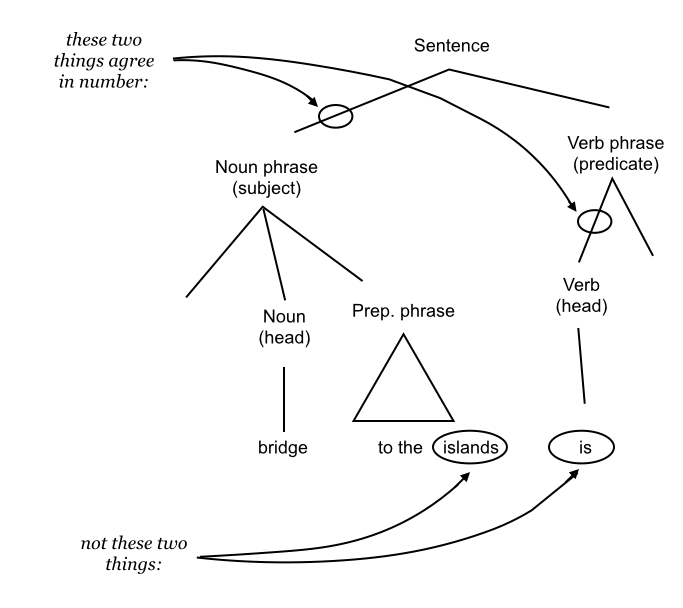
I’ve shown the image to friends and colleagues and they shake their heads. “Above my pay grade,” one said.
As a linguistic play structure, I suppose, Pinker’s tree diagrams might offer some amusement. But must we make matters so complicated? Why not start with simple structures—like subject-predicate—and then explore their common variations? Pinker’s contraptions, alas, make it harder, not easier, to grasp simple principles.
Let’s take another example—Pinker’s concept of “the gap.” Look at the following sentence:
The impact, which theories of economics predict are bound to be felt sooner or later, could be enormous.
Do you see the problem? Of course: The verb “are” should be “is,” since it refers to the singular noun “The impact.” The modifier here(“which theories of economics predict are bound to be felt sooner or later”) is helpfully set off with commas.
To get this passage right, Pinker suggests inserting a “gap” into the middle of the sentence, like this:
The impact, which theories of economics predict ____ are bound to be felt sooner or later, could be enormous.
Huh? This makes my hair hurt. Rather than focusing on simple structures, Pinker begins with complicated structures. Then he constructs a complicated user’s manual to examine them. Hello, Ikea.
Strangely, Pinker never offers a step-by-step process for writing from scratch. In this book, the only real instruction he offers is in rewriting awkward passages. When he rewrites, he usually maintains the basic structure of the passage. But why? So often, two shorter sentences work better than one long sentence. But Pinker pays no attention. He wants to play with something complex, not create something new by starting simply.
Confusing organization
Perhaps the book’s biggest problem in Pinker’s book comes from his aversion to signposts. A signpost is any device that orients the reader along the way. Think of the signposts you see when driving: GAS/FOOD/MOTEL … JOHNSON CITY, CORPUS CHRISTIE, NORTH ALAMO STREET … LAGUARDIA AIRPORT. These signs indicate, clearly and without any fuss, just where you are on the journey.
We need signposts for writing as well. As cub writers in middle school, we we learn to use the transition: “As we have seen …,” “The second objection …,” “On the other hand …,” “Therefore …,” and so on. In longer pieces, like research papers and books, we use sub-headlines to signal new topics. (Can you see the signposts in this too-long blog post?)
Signposting, ultimately, reveals the basic outline of a piece. Pinker would benefit from such a breakdown. Had he broken chapters into clearer sections and subsections, he would have seen just how rambling his prose can be. And he could have reorganized his thoughts into a logical sequence.
Without these signposts, Pinker skids all over, like a car driving on ice. In his chapter about “classic style,” for example he jumps from one technique to another: similes, metaphors, showing, analogy, narrative, metadiscourse, signposting, questions, asides, voice, hedging, intensifiers, just to mention a dozen. You need to hunt for these ideas, though. In the end, Pinker’s guide is no guide at all.
Pinker’s overall structure lacks clarity. Aristotle outlined the basic structure of stories 2,500 years ago in The Poetics. Drama, Aristotle shows, has three basic parts—beginning, middle, and end. In the beginning, we meet the principal characters and the world where they live. In the middle, we see the hero and other characters respond to a challenge—first resisting, then confronting increasingly difficult aspects of that challenge. At the end, we see change—in Aristotle’s terms, recognition and reversal—and resolution. Aristotle called this structure the narrative arc.
That same basic structure works for less narrative essays, analyses, explanations, and arguments. Start with a problem, break it down into pieces, then tie all the pieces together. Or as a grad school professor of mine said: “Say what you’re going to say, say it, and say you said it.”
Of course, writers should not limit themselves to this 1-2-3 structure. Sometimes a straight chronology or sequence works best. Lots of authors like triangles, which play with the interplay of three key characters or ideas. In theology school, Martin Luther King learned a whole set of formats for sermons—the fireworks, the stair-step, the diamond cut, and more.
Pinker never offers these basic techniques—nor does his own work model any of them. His entire book resembles nothing more than a star professor’s guest lecture. He riffs on topics, offering insight and wit, with an engaging and urbane persona. But he does not tell us what we need to do.
To nitpick or not to nitpick?
Pinker seems happiest when sorting the do’s and don’ts of grammar. He is, after all, the chair of the usage panel of the American Heritage Dictionary. He revels in the endless debates about etymology, slang, context, neologisms, and anachronisms.
Pinker amiably dismisses the concerns of Chicken Little stylists. Language, he explains, evolves. We need to adapt old words to new circumstances and invent new expressions. (True, dat.) Pinker scolds the stylists who scold others for using words like “contact.” He also takes on the purists who cling to outdated definitions for words like “decimate,” which people now user to say “destroy most of” (nopt the original meaning “reduce by one tenth”). He dismisses concerns about split infinitives and ending sentences with prepositions. He even comes to the defense of passages like “Me and Amanda went to the mall.” On that last point, Pinker explains that the Cambridge Grammar “allow[s] an accusative pronoun before and.” Of course.
Pinker wants language to breathe, grow, adapt—and sparkle. Good for him. But then, over 117 pages, he acts as the Grand Poobah of Word Usage. Often he provides a cogent explanation; often he doesn’t.
Pinker deems that we can “safely ignore” language purists on the following expressions: aggravate, anticipate, anxious, comprise, convince, crescendo, critique, decimate, due to, Frankenstein, graduate, healthy, hopefully, intrigue, livid, loans, masterful, momentarily, nauseous, presently, raise, transpire, while, and whose.
But for the following expressions, which he calls malapropisms, Pinker rules that we must hold fast to classical meanings: as far as, adverse, appraise, begs the question, bemused, cliché, compendious, credible, criteria, data, appreciate, economy, disinterested, enervate, enormity, flaunt, flounder, fortuitous, fulsome, hone, hot button, in turn, irregardless, ironic, literally, luxuriant, meretricious, mitigate, new age, noisome, nonplussed, opportunism, parameter, phenomena, politically correct, practicable, proscribe, protagonist, refute, reticent, simplistic, starch, tortuous, unexceptionable, untenable, urban legend, and verbal.
All of this is debatable. To decide, I would consider the rule’s logic as well as the expressive goal. I would disagree with Pinker, for example, on anxious. Its longtime meaning is worried and, to me anyway, the word still carries an edgy kind of anticipation. But Pinker and the AHD Usage Panel shrug and accept the growing use of the word to mean eager. I disagree, respectfully. That’s the point: We need to debate these matters as language evolves.
Can writing be taught?
When asked to explain their secrets, writers often demur. “You can’t teach it,” William Faulkner said. The argument goes like this: The only way to learn writing is to write and engage in a constant process of crit/self-crit. Writers learn through their own unique processes of trial and error. They cannot always pass their wisdom on to other writers.
Pinker agrees that real mastery can be hard and elusive. He calls writing “an unnatural act.” He quotes Darwin: “Man has an instinctive tendency to talk, as we see in the babble of our young children, whereas no child has an instinctive tendency to bake, brew, or write.” Writing, he says, is “above all, an act of pretense.” It doesn’t just happen; we need to make it happen. Every time we compose something, we work against our deep, hardwired needs and abilities. A few lucky souls develop a knack for writing, but the rest of us struggle to put the right words in the right order.
In conversation, Pinker notes, we see how other people respond to our words. Our interlocutors respond right away to what we’re saying. We can tell when someone’s bored, confused, angry, excited, hurt, and so on. Instantly, we can adjust to connect. Not so with writing. The audience is not present. You never know if your actions will connect with your partner.
So far, so good. But Pinker is missing the most important quality of humans: We are all storytellers. We might not captivate people, but almost all of us can tell a decent yarn about the Springsteen concert, the toddler’s T-ball game, or the drunken boss at the Christmas party. Here’s why that matters: Storytelling offers the basic structure of all writing, from the simple sentence to the grand epic. If we’re smart, we can deploy our innate love and need for storytelling to master writing.
Every day, neurologists tell us, we have 50,000 or more (mostly trivial) thoughts. We think about when to get up, what to eat for breakfast, getting the kids to school, an aching knee, stalled traffic, spilled coffee, and so on. We usually cluster those thoughts into narrative sequences.
An example: When my alarm rings in the morning, I have a sequence of thoughts like this: Oof, 6 o’clock already? Should I hit the snooze button? Maybe. Oh, but I need to use the bathroom. And the cat needs feeding. And also: coffee. OK, I’ll get up.
The structure of these unbidden thoughts is familiar: Beginning (Oof, 6 o’clock already? Should I hit the snooze button?), middle (Maybe. Oh, but I need to use the bathroom. And the cat needs feeding. And also: coffee), and end (OK, I’ll get up).
It’s automatic. Lying i bed, I don’t think about Aristotle or narrative arcs. The mini-narrative just emerges on its own. And it happens all day long.
Here’s the thing: This narrative arc also provides the basic structure of a good sentence and paragraph. Contra Pinker, writing is a natural act. It’s natural enough, anyway. With some guidance, every could learn how to write good sentences and paragraphs.
But not if they’re trying to figure out Pinker’s spaghetti graphics.
Learning What Comes Natural
Years ago, I witnessed a group of four- to six-year olds sit at computers at an elementary school in the Anacostia section of Washington, D.C. Participants in an experimental program called “Writing to Read,” these students composed brief pieces before they could even read. Filled with stories they wanted to share—about family and homes, friends and neighborhoods, school and sports, and more—they just sat down and typed. Freed from didactic do’s and don’ts, they showed me that virtually anyone can write when given a chance. Later, of course, these students would need to master the basics of grammar and style. But there’s plenty of time for that, as long as they are enthusiastic about writing in the first place.
More recently, I taught a writing seminar to a room full of high school dropouts in Boston. At the beginning of our daylong session, I asked participants to write for five minutes about anything that came to their minds. One woman sat, paralyzed.
“What’s up?” I asked.
“I just can’t do it,” she said.
“Write anything,” I said. “Write about getting up, eating breakfast, taking the bus—anything. Don’t worry about grammar. Just get something on paper.”
But she couldn’t put down a word. That day, we learned all kinds of storytelling skills. We developed a fictional character and then put that character into action. Using Aristotle’s arc, we created a story from nothing. Then we explored how the basic units of writing—sentences and paragraphs—had the same basic structure as stories. At the end of the day, I asked the students to write a paragraph. The woman who was so paralyzed that morning wrote a complete, cogent paragraph. Proudly, she had mastered the rudiments of writing.
To write well, we just need to tap our natural gifts for storytelling. When we do that, writing becomes less of an insider’s game of rules and prescriptions and more a process of discovery and sharing. Once we get into the flow of writing, it’s easier to make sense of rules and prescriptions—the stuff of Pinker.
Steven Pinker is one of the true public intellectuals of our time. He writes with verve. Like an enthusiastic and erudite tour guide, he points out patterns and oddities that make the world fascinating. Right or wrong, he has given us invaluable glimpses into the debates about evolution, human nature, language, and human aggression. This time, though, he falters. Fascinated by the sights along his tour, he fails to show us the overall structure of the journey.
Before you go . . .
• Like this content? For more posts on writing, visit the Elements of Writing Blog. Check out the posts on Storytelling, Writing Mechanics, Analysis, and Writers on Writing.
• For a monthly newsletter, chock full of hacks, interviews, and writing opportunities, sign up here.
• To transform writing in your organization, with in-person or online seminars, email us here for a free consultation.
 When you pose a question but delay the answer, you create a state of anxiety in the reader. Just the right measure of anxiety keeps the reader involved. “Think of the brain as a prediction machine,” says David Rock, a business consultant and lecturer on cognition. “Massive neuronal resources are devoted to predicting what will happen each moment.”
When you pose a question but delay the answer, you create a state of anxiety in the reader. Just the right measure of anxiety keeps the reader involved. “Think of the brain as a prediction machine,” says David Rock, a business consultant and lecturer on cognition. “Massive neuronal resources are devoted to predicting what will happen each moment.”

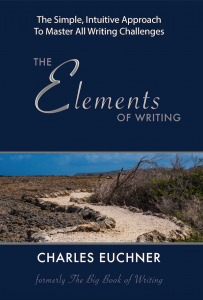
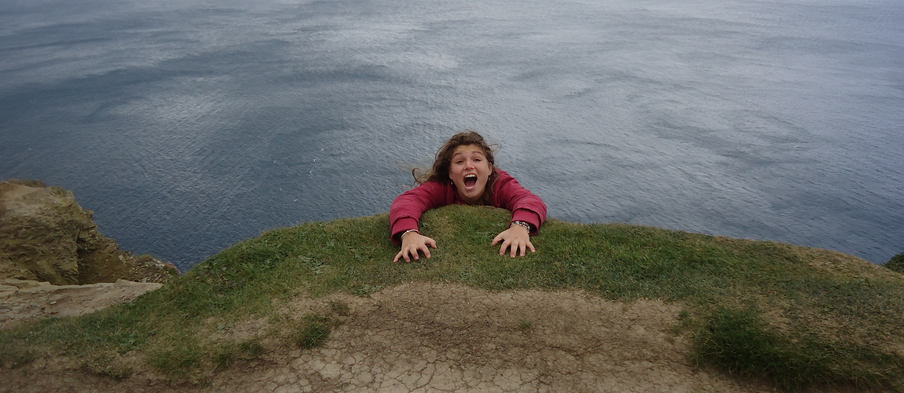
 God is my witness. Look at the surprises that fill The Bible. God torments Job, his loyal servant. The father rushes out to greet his prodigal son. Jesus allows a prostitute to wash his feet. Jesus expels the moneychangers from the temple. When skeptics challenge Jesus to display his extraordinary powers, he refuses. These cliffhangers and surprises tease the reader.
God is my witness. Look at the surprises that fill The Bible. God torments Job, his loyal servant. The father rushes out to greet his prodigal son. Jesus allows a prostitute to wash his feet. Jesus expels the moneychangers from the temple. When skeptics challenge Jesus to display his extraordinary powers, he refuses. These cliffhangers and surprises tease the reader.

 What comes next is even more intriguing.
What comes next is even more intriguing.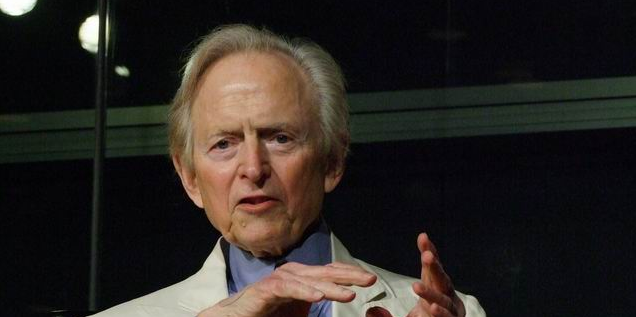
 In fact, the two schools are not as incompatible as they might seem. You see, even the most ornate prose is usually just a collection of simple phrases and ideas. When you break down a master of literary riffing, like Tom Wolfe or Hunter S. Thompson, you see a string of simplicity.
In fact, the two schools are not as incompatible as they might seem. You see, even the most ornate prose is usually just a collection of simple phrases and ideas. When you break down a master of literary riffing, like Tom Wolfe or Hunter S. Thompson, you see a string of simplicity.
 In this too-busy world, the writer needs to seduce the reader right away. If you do not lure the reader, he will go elsewhere. Every lead should somehow make the reader want to turn to a friend and say, “Hey, get a load of this.”
In this too-busy world, the writer needs to seduce the reader right away. If you do not lure the reader, he will go elsewhere. Every lead should somehow make the reader want to turn to a friend and say, “Hey, get a load of this.”

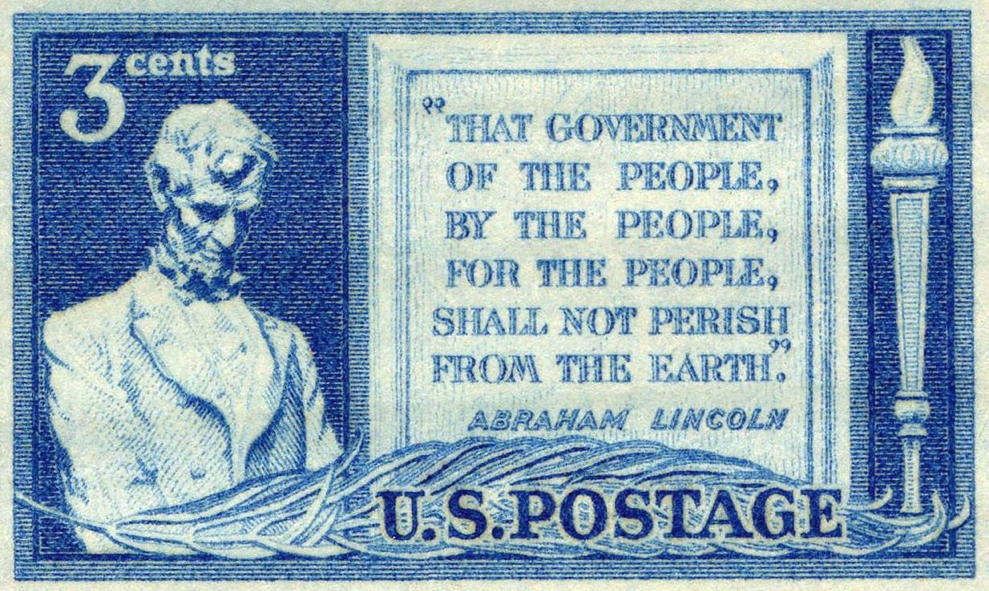


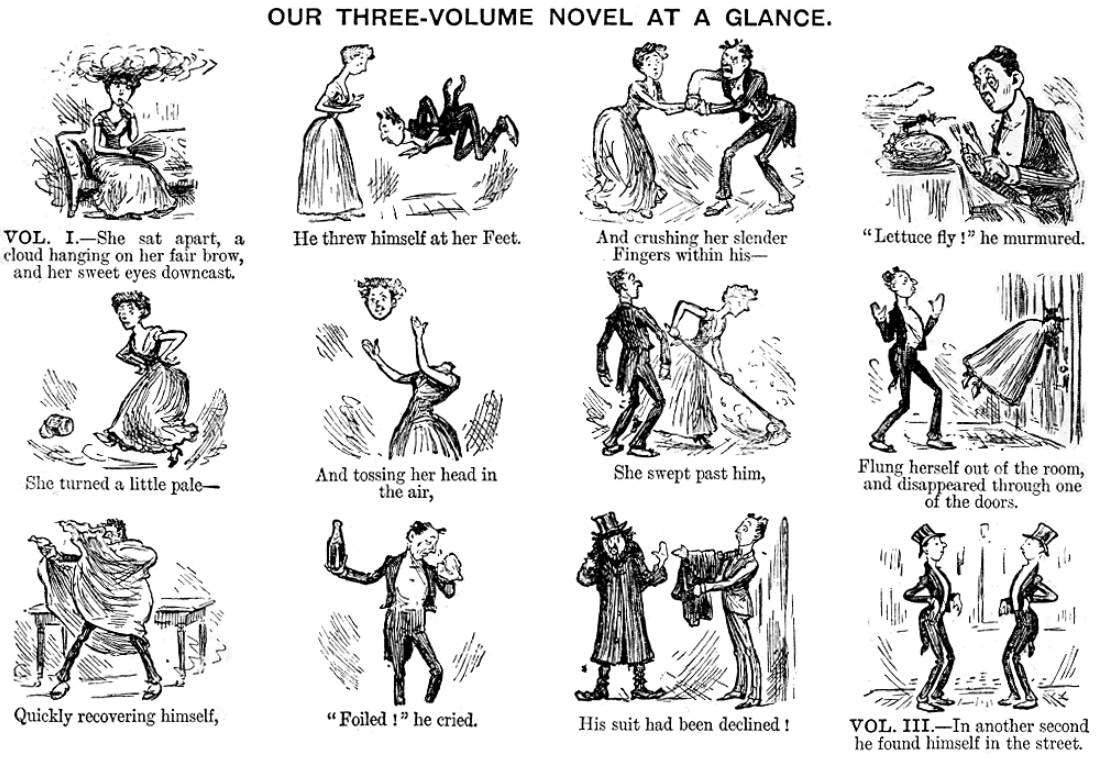

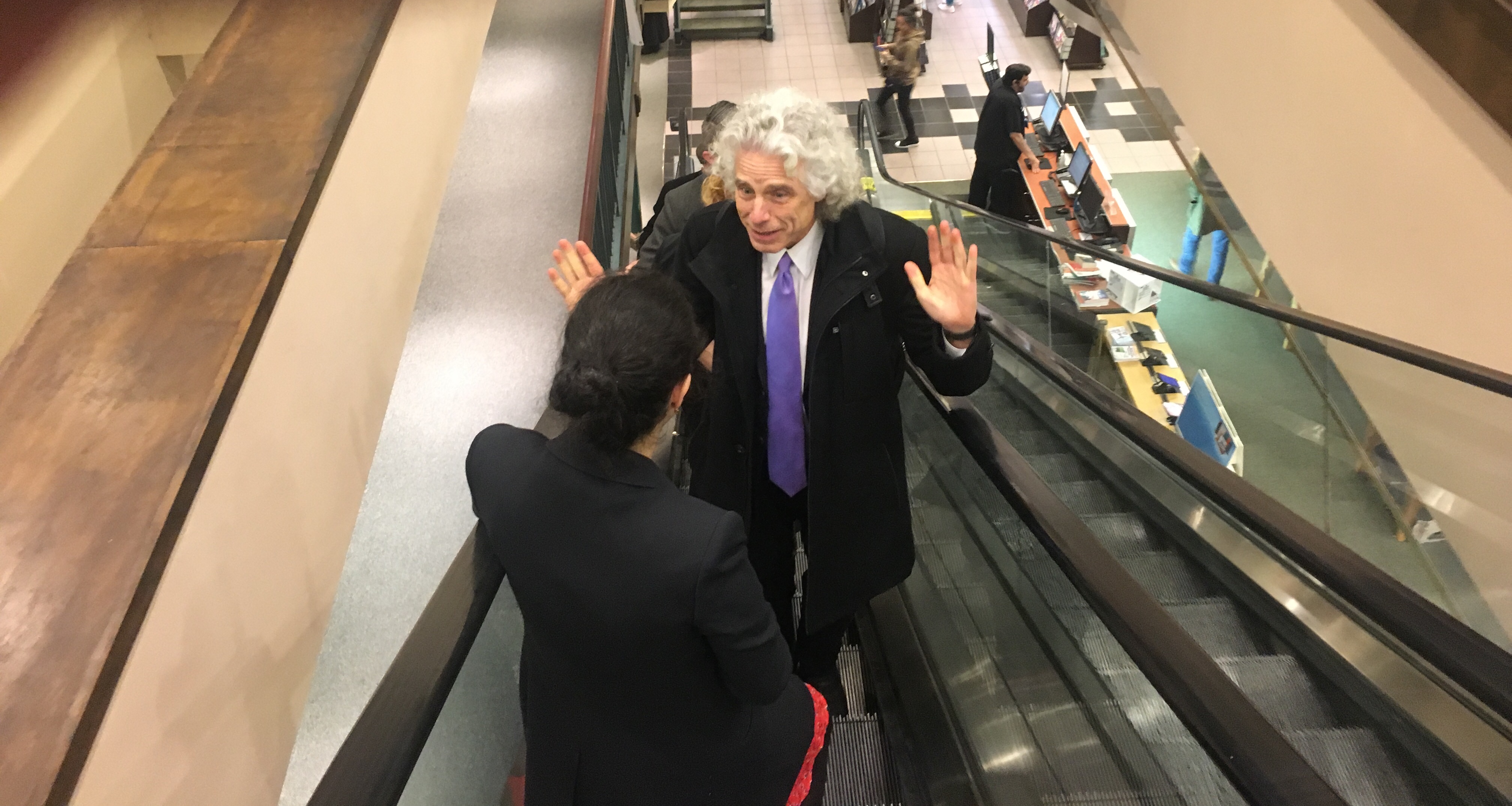





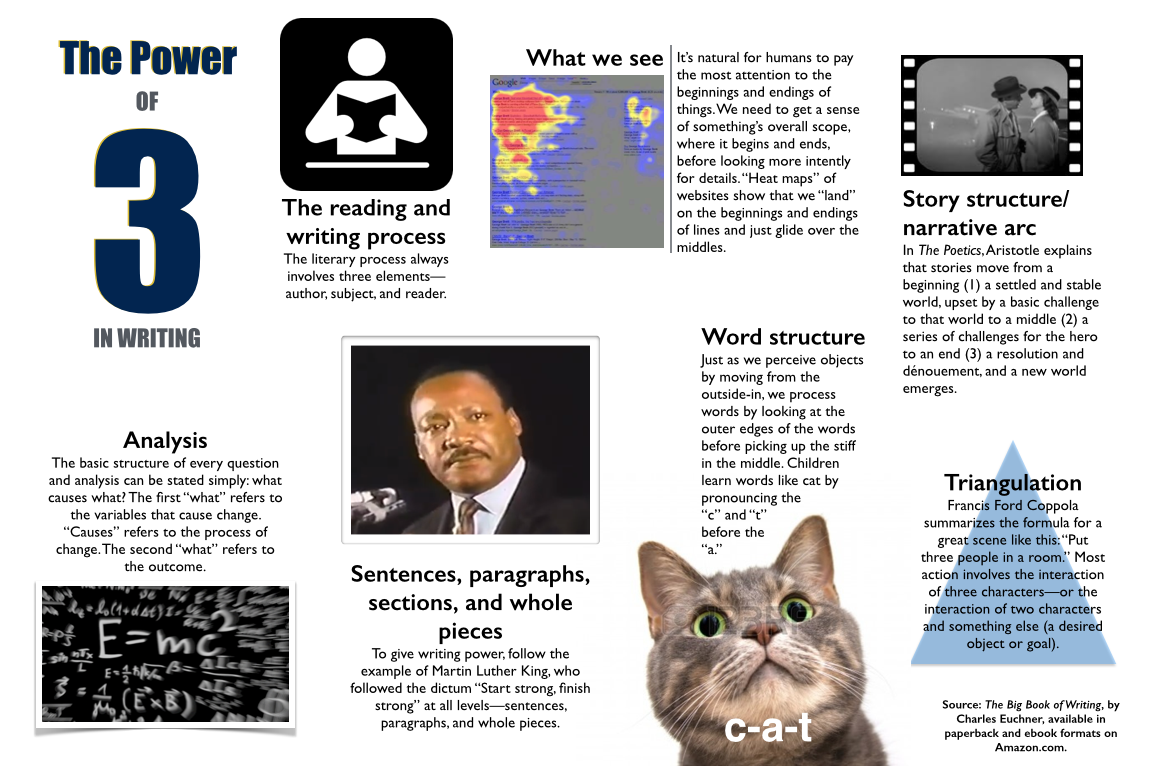

 We’re going to have to pass on the manuscript, though. I’d like you to rethink the concept and do more research. Right now, the book is a loose collection of anecdotes, which take huge leaps of logic, offer scanty evidence, and contain contradictions that undermine your case.
We’re going to have to pass on the manuscript, though. I’d like you to rethink the concept and do more research. Right now, the book is a loose collection of anecdotes, which take huge leaps of logic, offer scanty evidence, and contain contradictions that undermine your case.











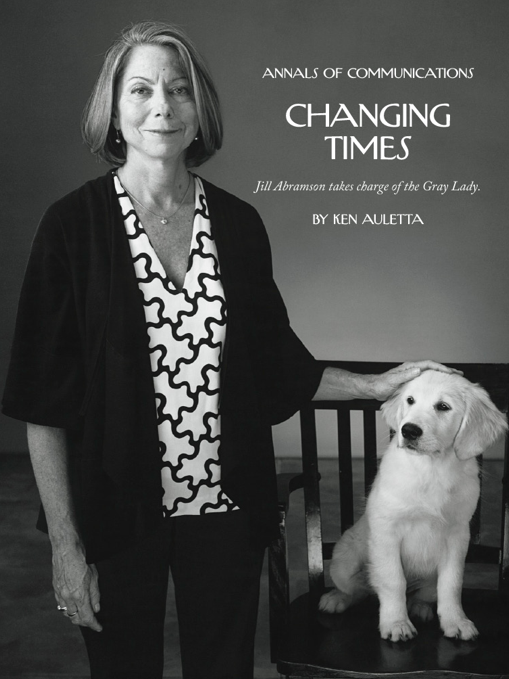

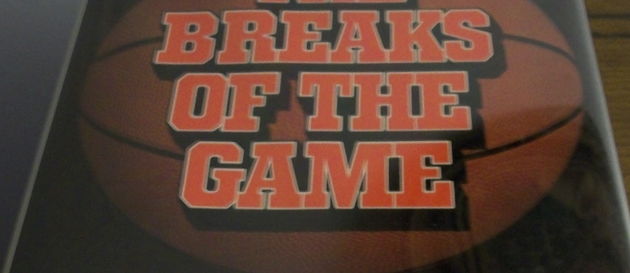
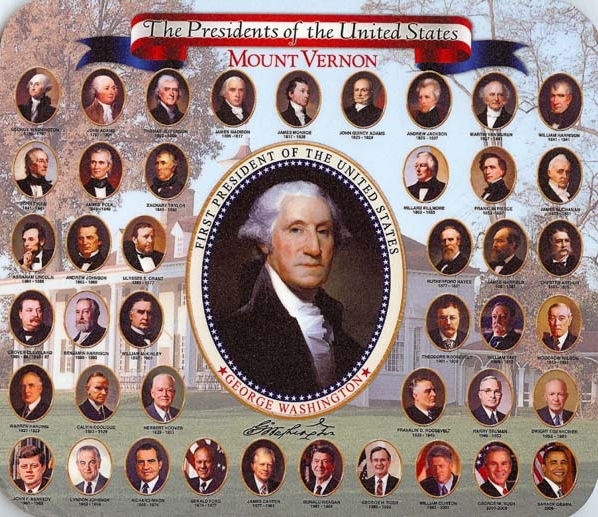

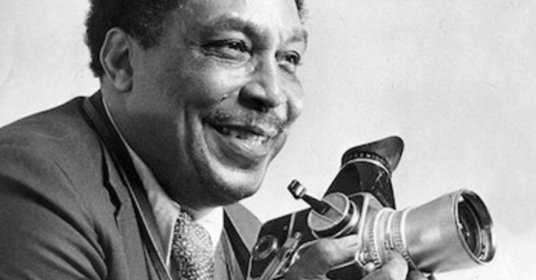
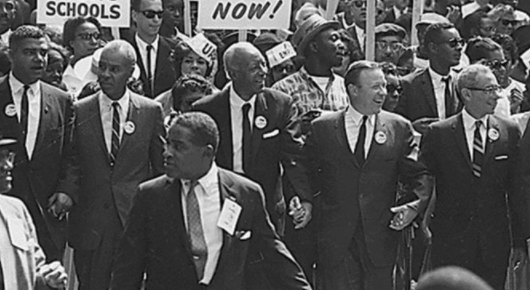
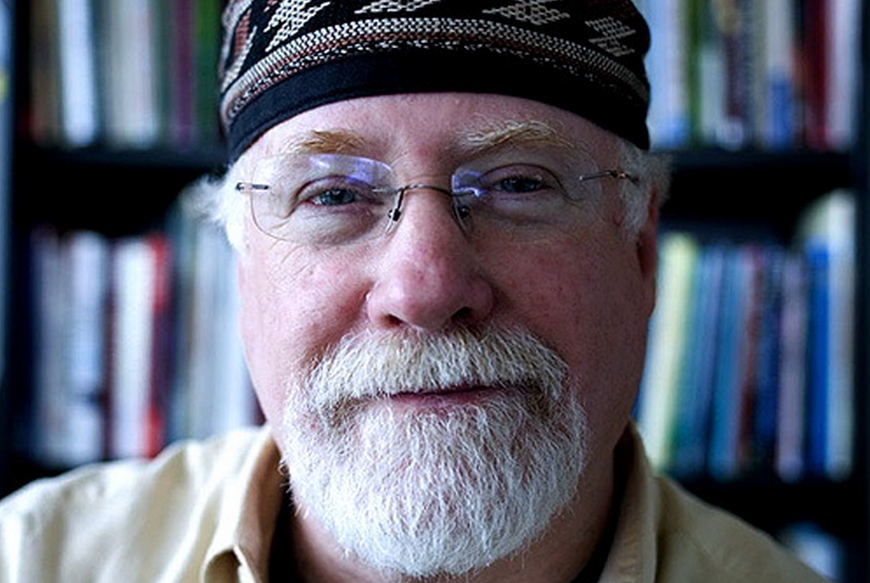


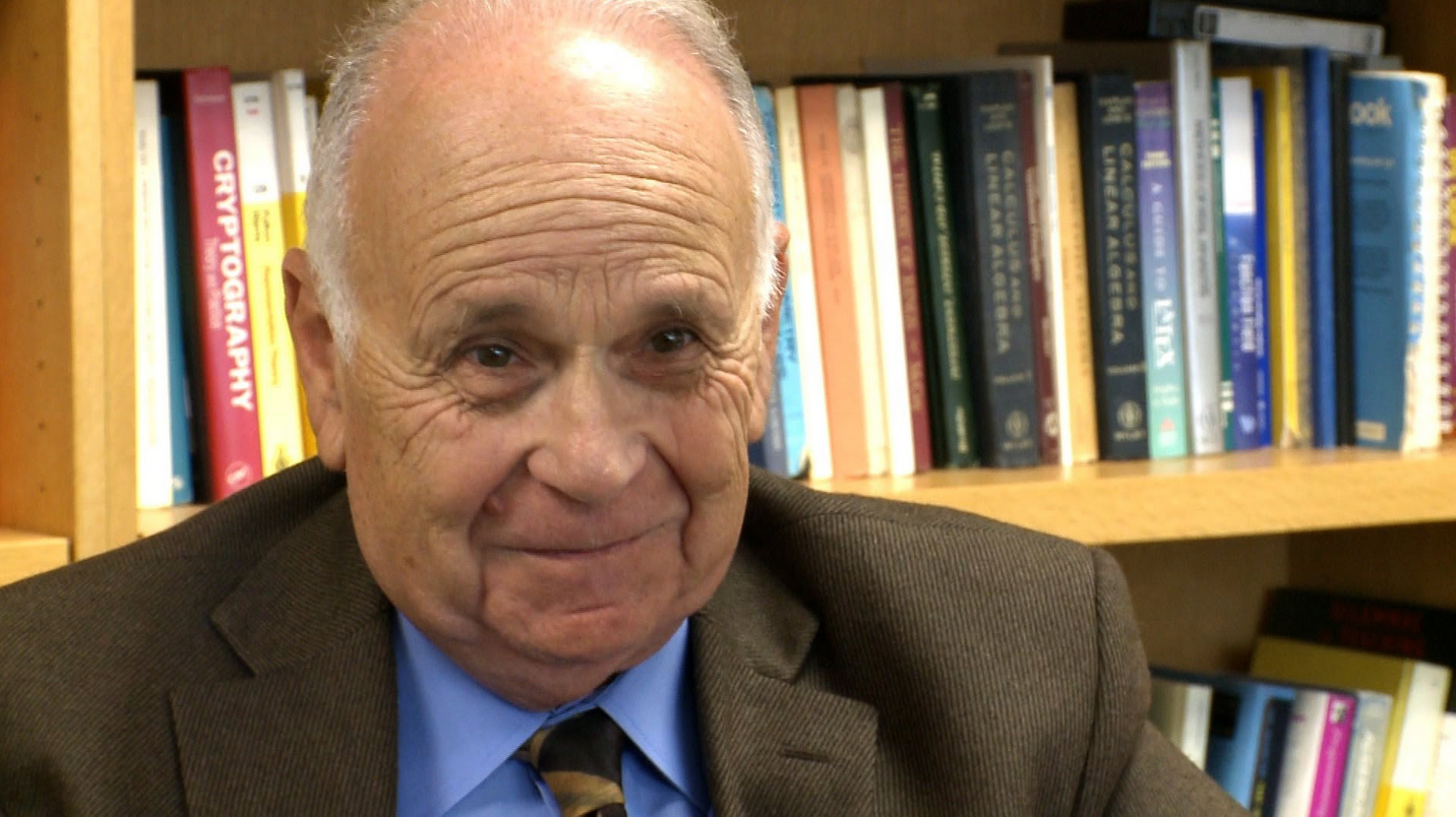

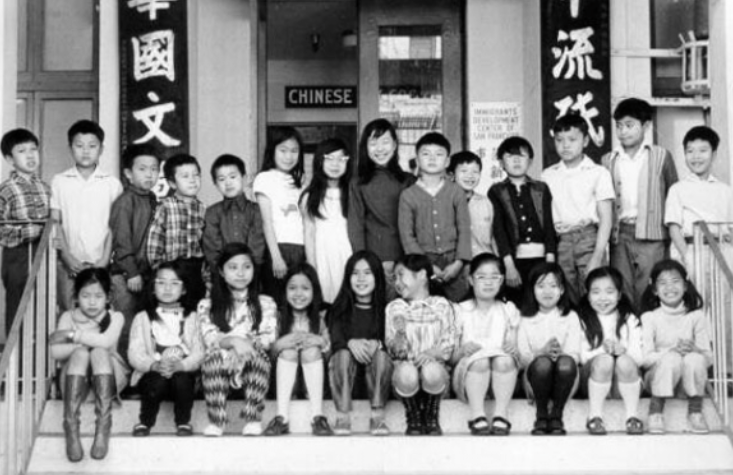






Which led me to wonder: Are we leaving anyone out?